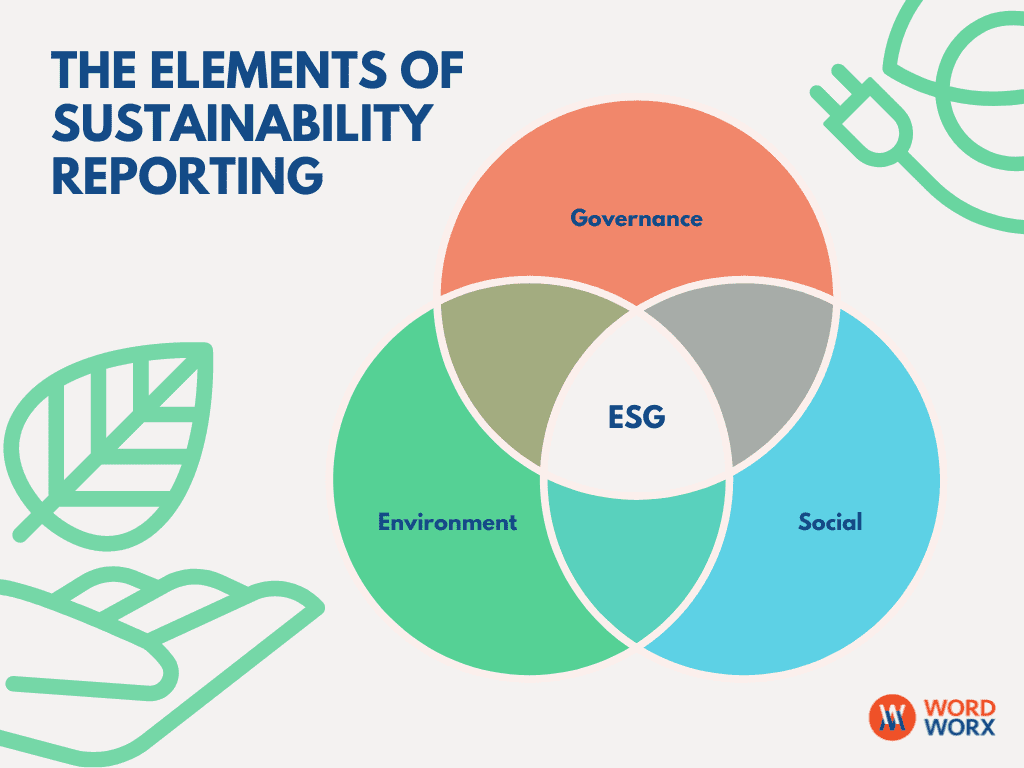There are several elements of sustainability reporting that you need to consider when preparing a sustainability or ESG report.

The 3 key elements that make up the ESG acronym include: Environment, Social, and Governance, and these elements form the framework of any sustainability report. In fact, they can serve as a strong outline for your report, helping group ideas and content and directing your ESG narrative.
Below I’ll break down each of the elements of sustainability reporting and what you can include within each section (note — these key elements can serve as a framework, but you also should include various other sections in your publication, such as a section dedicated to policies, or even a section at the end that deals with acronyms used throughout the report).
The 3 Elements of Sustainability Reporting
1. Governance
The first element is governance. This section should detail your company’s:
- Approach to sustainability.
- Internal assessments.
- External research.
- Materiality assessment highlighting stakeholders’ concerns about sustainability and ESG topics.
- Stance on ESG matters and sustainability strategy, as well as ambitions and goals.
- Sustainability roadmap, compliance, and measurement efforts, along with external sustainability initiatives and how they align with internal regulations and frameworks.
- Internal controls, policies, and procedures governing leadership, board composition, sustainability committee responsibility, and whistleblower programs.
- Shareholder rights, audits, committee structures, efforts to combat corruption, and sustainable investments for the future.
2. Environment
Next is the environmental element, which focuses on the initiatives and projects your company pursues to create a better planet. This section may include details of your company’s:
- Impact on the environment and vice versa.
- Efforts towards carbon neutrality, water reduction, waste management, and other environmental aspects.
- Dedication to address environmental topics such as:
- Climate change
- Carbon emissions
- Biodiversity
- Air pollution
- Sustainable resources in the supply chain.
3. Social
The social element, represented by the ‘S’ in ESG, is concerned with:
- Fair and equal wages.
- Employee engagement.
- Creating an open and transparent work environment.
- Diversity, equity, and inclusion (DEI) efforts.
- Awards your company has received on social-related topics.
- Community involvement or outreach projects.
- Labour standards, human rights, data protection, privacy, and gender-related initiatives.
By covering the 3 abovementioned elements of sustainability reporting in your upcoming publications, you can provide a comprehensive overview of your company’s commitment to the ESG topics within a structured ESG framework.
Enjoyed the Elements of Sustainability Reporting?
Reach out to sustainability report writer, Elizabeth at WordWorx to learn more about how we help clients write and compile their sustainability reports: info [AT] elizabethjoss.com.
